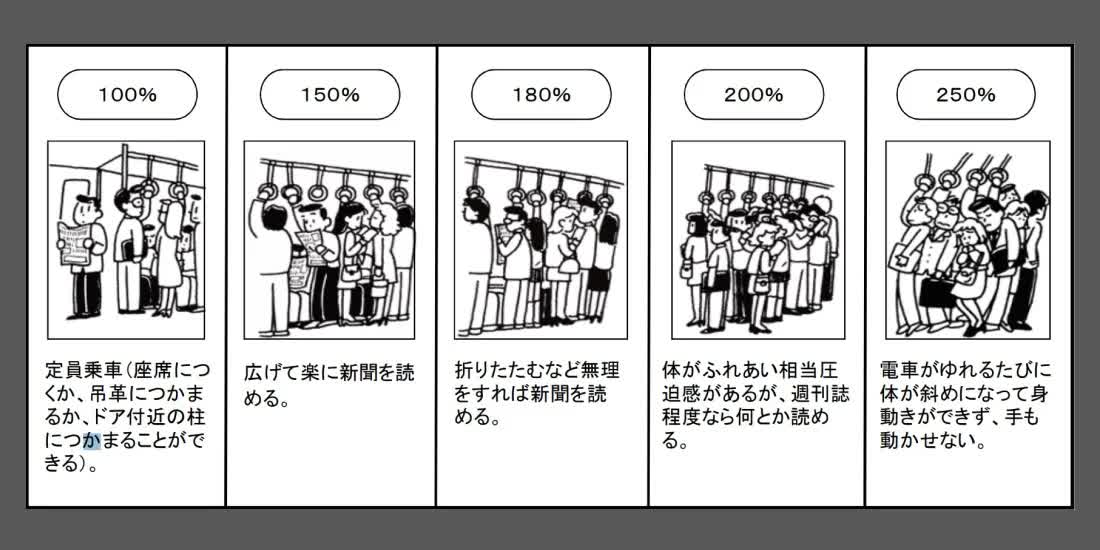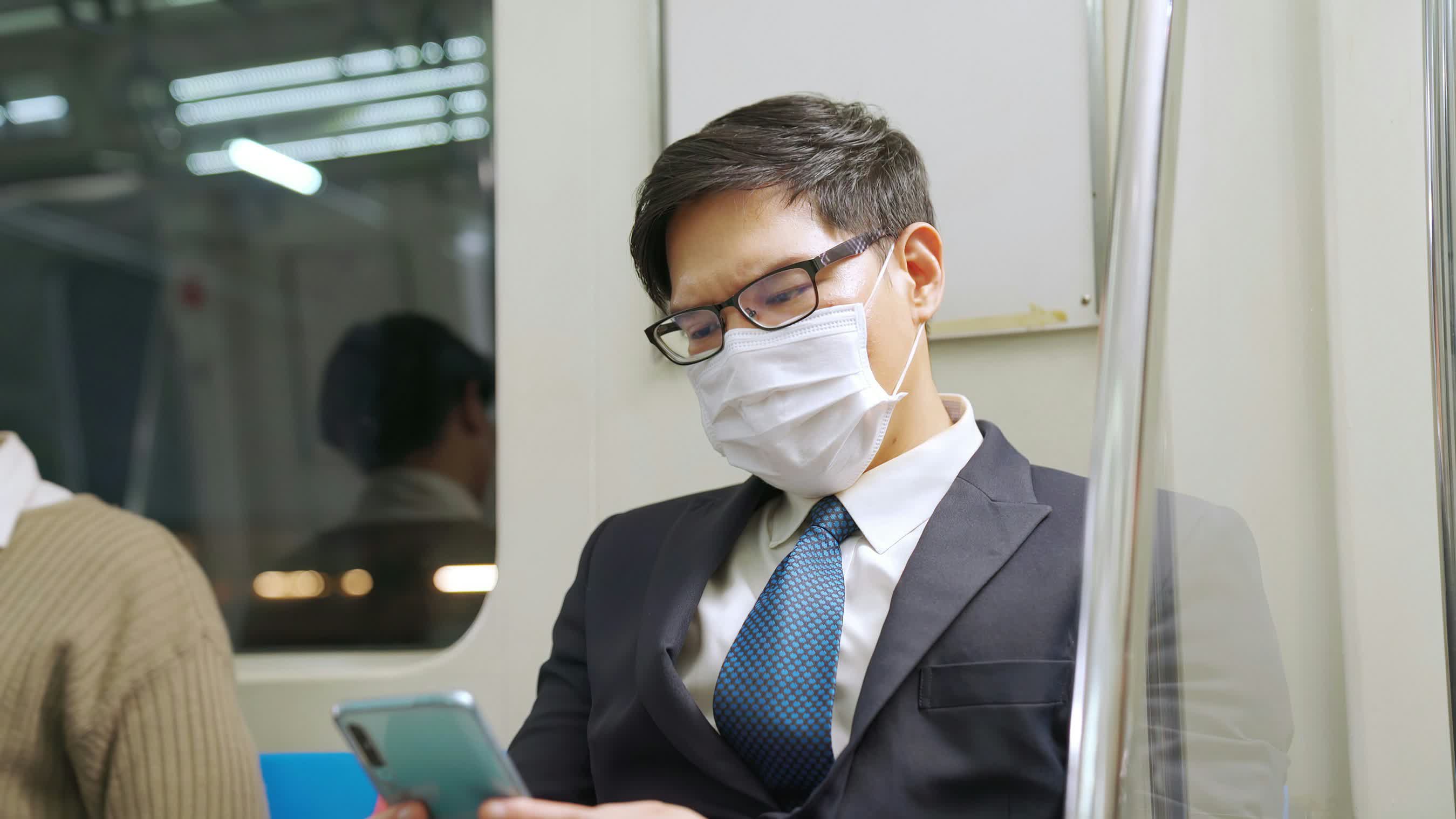In brief: In what is the perfect illustration of how the world has changed over the last two and a half decades, Japan has stopped measuring crowding on trains using a peculiar metric: how easy it is to read a newspaper or magazine while in a carriage. The decision has likely been made because most people are now glued to their phones instead of a newspaper while commuting.
Japan’s Ministry of Land, Infrastructure, Transport, and Tourism regularly reports on the congestion rates of trains in the country’s major metropolitan areas, notes The Reg. Up until now, the authority had used the illustration below to show just how busy trains were.

The least congested rating, classed as 100%, describes a train at capacity where travelers can still sit in a seat, hold on to a strap, or grip a pillar near the door.
At 150%, people can easily open and read a newspaper, and while this is also possible at 180%, it takes an effort to fold it.
Next is 200%. At this point, your reading material is limited to magazines, and there will be a lot of physical contact pressure from others on the train. Finally, the 250% rating has the very concerning description of “Every time the train shook, my body tilted and I couldn’t move, not even my hands.” No reading papers at this level, basically.
The Ministry’s latest congestion report does away with the graphic and no longer measures congestion based on travelers’ ability to read newspapers/magazines.

The new ratings see the 100% capacity description unchanged. At 150%, people’s shoulders do not touch, and there will be more people near the door. At 180%, shoulders touch and there is a slight sense of pressure. This is especially uncomfortable for the person near the door, who will feel cramped and have difficulty turning around.
Finally, at 200% capacity, bodies will touch, creating a great sense of pressure. People near the door will be unable to move – and probably panicking, by the sound of it.
The changes are designed to make the ratings more up to date while also reflecting the opinions of experts and “others.” There’s no mention of the falling number of people who read physical media on trains, or how most travelers are now on their phones, but these were likely major factors.
It’s a shame the Ministry never used smartphone-specific metrics for the new system, such as being able to record and post a pretentious social media video, take an annoying selfie, play a microtransaction-packed game, and have a conversation with the phone’s speaker enabled so everyone can hear it.

